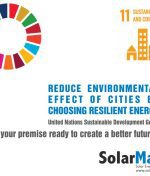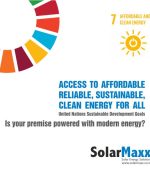
Latest technology vacuum tube vs flat plate collectors
Solar thermal collectors can potentially gain energy through radiation. According to the law of thermodynamics, heat energy moves from hot (High temperature) to cold (Low temperature), so when looking specifically at energy transfer in solar collectors, conduction and convection will almost always mean that energy is being moved from the hotter collector to the colder ambient air. This is because domestic water needs to be heated to 60°C or more. For a solar thermal collector to be effective it must minimize conduction (by using good insulation) and convection (by using a sealing barrier). A solar thermal collector therefore can only gain energy through radiation, hence the development of selective coatings that absorb radiation but limit the amount re-radiated. The table on the left indicates the ways in which energy is transmitted in typical modern Evacuated Vacuum Tube and old style Flat Plate systems, when the collectors are hotter than the surrounding air. As you can see, both types of collector will be gaining energy through radiation. However, a Flat Plate collector will lose energy through conduction, therefore reducing the amount of energy that can be transferred to your hot water tank. There is virtually no loss of energy from the Evacuated Vacuum Tube collector as conduction cannot take place due to absence of medium due to the near perfect vacuum. Because more of the collected energy is trapped, more energy can be transferred into your domestic hot water system. A vacuum is the only effective way to stop energy being transferred out of the system. Conduction will still take place across double-glazed and/or gas-filled Flat Plate collectors. Insufficient insulation means a Flat Plate collector is influenced by the surrounding air temperature, wind chill and evaporation of moisture from its surface. A Vacuum Tube collector works virtually independently of these influences as the vacuum acts as an impassable barrier that stops the energy collected from escaping. A Evacuated Vacuum Tube collector will produce almost as much energy on a sunny winter’s day when it is 0°C outside, as it will on a sunny summer’s day.
.

The amount of energy a collector can gain through radiation decreases, as its temperature increases above the ambient air temperature. The graph on the left indicates the efficiency of typical modern Evacuated Vacuum Tube and old style Flat Plate collectors at gaining energy at different temperatures above ambient. It is easy to see that the efficiency of all collectors falls as the temperature above ambient increases, but it is important to compare the efficiencies at the particular water temperature to be achieved. If we assume that we are trying to heat domestic water above the ambient temperature then the Vacuum Tube system is 88% efficient, where as the efficiency of the Flat Plate system has fallen to just 58%. These figures relate to how efficiently collectors gain energy at different temperatures above ambient air temperature.

Tests have shown that throughout the year,for a per m² of solar thermal collector, a high quality Evacuated Vacuum Tube system, such as SolarMaxx Solar Water Heating, will produce about twice the energy to heat water than a Flat Plate system. All through the year a 4m² Flat Plate system would produce a similar amount of energy as a 2m² Evacuated Vacuum Tube system, and majority of the energy will be produced during the summer months by FPC which is not useful as majority of hot water requirement is during winter months. The blue shaded area in the chart here indicates the amount of hot water required throughout the year. The coloured lines indicate the contribution various systems could make to this requirement. Any energy produced in excess of the hot water requirement is wasted, so there is limited benefit of installing an oversized Flat Plate System.




